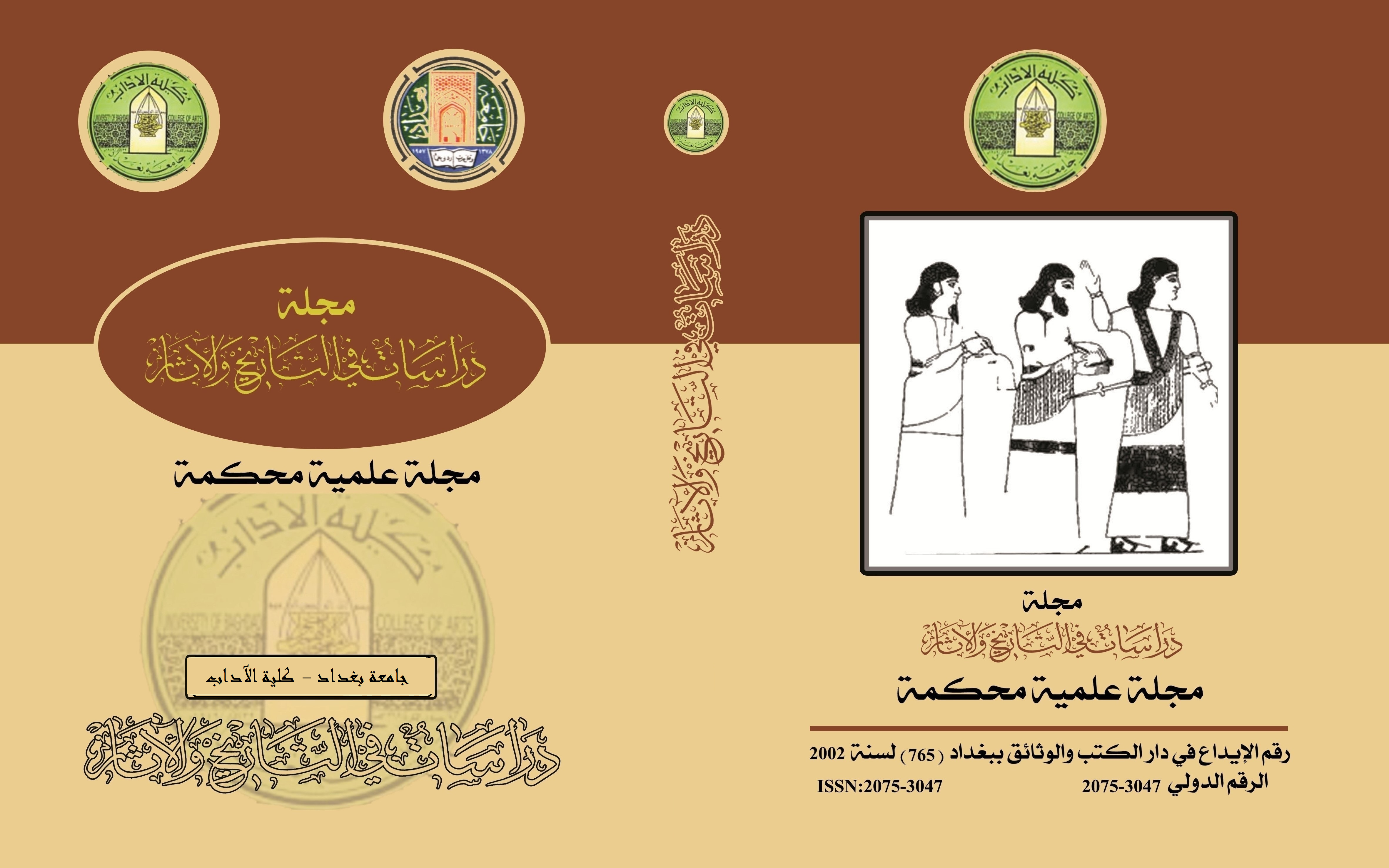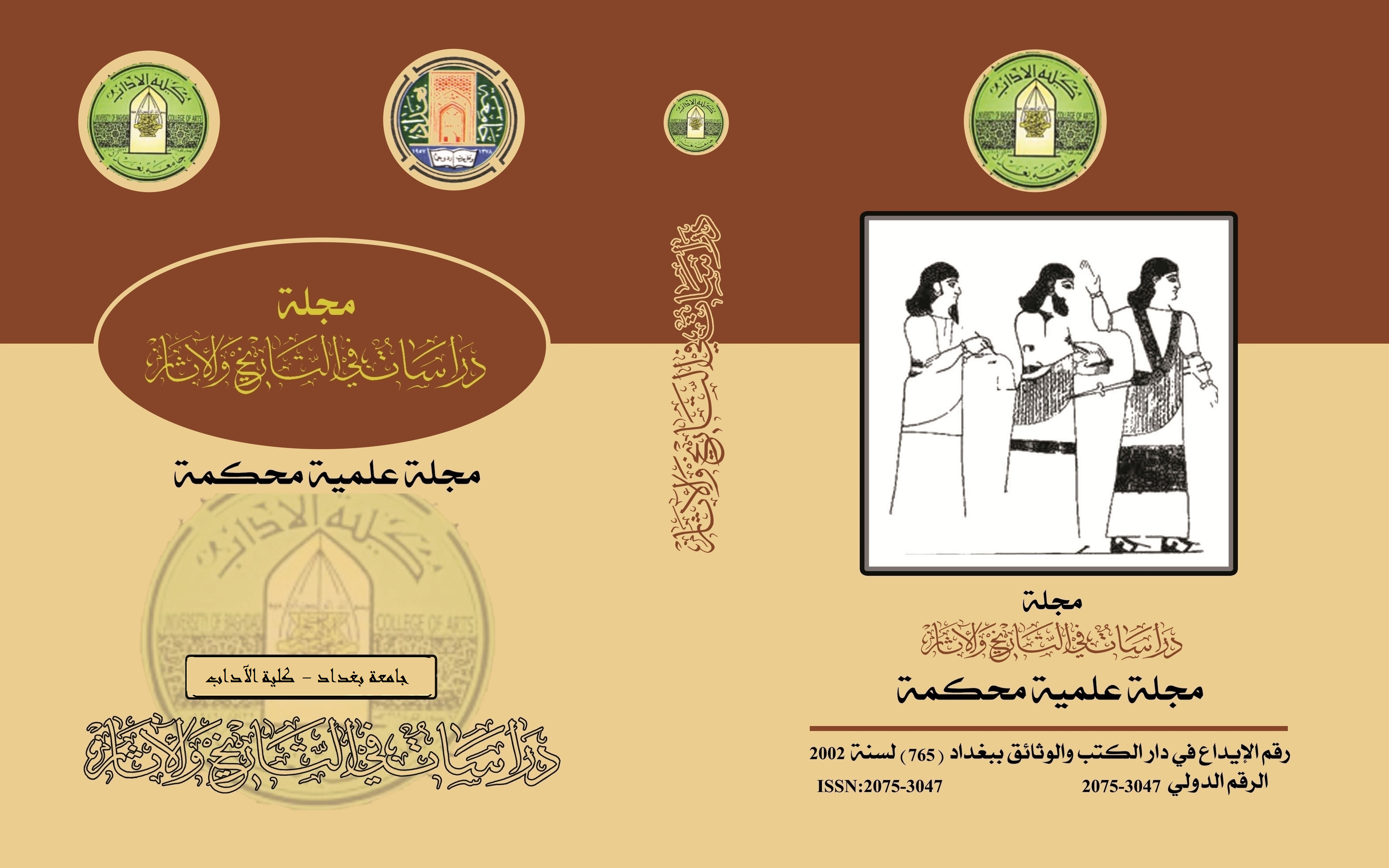الزهور في الأدب المصري (الغزل- الرثاء) انموذجاَ
الكلمات المفتاحية:
الزهور، زهرة اللوتس، الادب، مصر القديمةالملخص
الزهور زينة جميلة تصوغها بطون الارض لظهورها وهي ابهى ماتمنحه الطبيعة للانسان، فعرف المصريين القدماء انواع عديدة من الزهور التي كان لها اهيمة كبيرة في حياتهم اليومية وكان مولعون بها ، وقد عني المصريون القدماء بتربية الازهار عناية باللغة، وتفننو في استخدام الزهور في مجلات شتى ، فاللبيئة المصرية المعروفة بمناخها الملائم كالحرارة المعتدلة اضافة الى وجود نهر النيل الذي يعد السمة التي تميز الارض المصرية لما يحمله معه من طمى تزيد من خصوبة الارض ولهذه الاسباب اصبحت ارض مصر متفوقة زراعيا ، كل هذه العوامل شجعت على زراعة انواع عديدة من الزهور ، والتي كان احتياجهم لها لاحصر لها ، وكان لها حضور في الادب المصري القديم ، فقد ذكروها في شعرهم ، وكان اهمها هي زهرة اللوتس ملكة الازهار لديهم وهي الزهرة المقدسة ، حيث كان لها مكانة مميزة في قصائد الحب والغزل والرثاء.
المراجع
جبر، صابر، تاريخ العقاقير والعلاج، (القاهرة: مؤسسة هنداوي للتعليم والثقافة، 2012).
حسن، سليم، موسوعة مصر القديمة - الأدب المصري القديم، (القاهرة: مكتبة الاسرة، د.ت)
دلو، برهان الدين، حضارة مصر والعراق التاريخ الاقتصادي – الاجتماعي – الثقافي والسياسي، (بيروت: دار الفارابي، 1989).
دوما، فرانسوا، حضارة مصر الفرعونية، تر: ماهر جويجاني، (القاهرة: المجلس الأعلى للثقافة، 1998).
سليمان، رحاب عوض، وصف الأزهار في الشعر العربي حتى نهاية القرن السابع، رسالة ماجستير غير منشورة، السودان، جامعة ام درمان الاسلامية، كلية التربية، 2005.
شباكوفسكا، كاشا، الحياة اليومية في مصر القديمة، تر: مصطفى قاسم، (القاهرة: المركز القومي للترجمة، 2013).
عبد الناصر، مرڤت، اللوتس حكاية زهرة تختصر الوجود، (القاهرة: نهضة مصر للنشر والتوزيع، 2007).
فياض، الجمال والتجميل، ص71.
لالويت، كلير، الفن والحياة في مصر الفرعونية، تر: فاطمة عبد الله محمود، (القاهرة: المجلس الأعلى للثقافة، 2003).
لولايت، كلير، نصوص مقدسة ونصوص دنيوية من مصر القديمة، تر: ماهر جويجاني، (القاهرة: دار الفكر للدراسات والنشر والتوزيع، 1996).
مانيش، ليز، الحياة الجنسية في مصر القديمة، تر: رفعت السيد علي، (القاهرة: دار حور، 2002).
مرى، مرجريت، مصر ومجدها الغابر، تر:محرم كمال، (القاهرة: الهيئة المصرية العامة للكتاب، 1998).
مهران، محمد بيومي، الحضارة المصرية القديمة الآداب والعلوم، (الاسكندرية: دار المعرفة الجامعية، 1989)، ج1، ص205.
Erman, Adolf, The Literature of the Ancient Egyptians, Translation: Alyward M. Blackman, (London:Mathuen and Co. Ltd, 2016)
Grandet, pierre, Le Paryrus Harri L, Volume. I, )Caire: Insttut Francals D'arch'eologie orientaledu(
Lichtheim, Ancient Egyptian, Volume II,
Lichtheim, Miriam, Ancient Egyptian Literature, Volume II,) press, Editorial university of California,1978)
Wilkinson, Sir J. Gardner, The Fragments of the Hieratic papyrus at )Turin: Containing the Names of Egyptian kings, with the Hieratic Inscription at the Back, London: Printed T. Richards, 1851), p.p.1-6;
التنزيلات
منشور
إصدار
القسم
الرخصة

هذا العمل مرخص بموجب Creative Commons Attribution 4.0 International License.
:حقوق الطبع والنشر والترخيص
بالنسبة لجميع البحوث المنشورة في مجلة دراسات في التاريخ والآثار، يحتفظ الباحثون بحقوق النشر. يتم ترخيص البحوث بموجب ترخيص Creative Commons CC BY 4.0 المفتوح ، مما يعني أنه يجوز لأي شخص تنزيل البحث وقراءته مجانًا. بالإضافة إلى ذلك ، يجوز إعادة استخدام البحث واقتباسه شريطة أن يتم الاستشهاد المصدر المنشور الأصلي. تتيح هذه الشروط الاستخدام الأقصى لعمل الباحث وعرضه.
:إعادة إنتاج البحوث المنشورة من الناشرين الآخرين
من الضروري للغاية أن يحصل الباحثون على إذن لإعادة إنتاج أي بحث منشورة (أشكال أو مخططات أو جداول أو أي مقتطفات من نص) لا يدخل في نطاق الملكية العامة أو لا يملكون حقوق نشرها. يجب أن يطلب الباحثون إذنًا من مؤلف حقوق النشر (عادة ما يكون الناشر).
يطلب الإذن في الحالات التالية:
بحوثك الخاصة المنشورة من قِبل ناشرين آخرين ولم تحتفظ بحقوق النشر الخاصة بها.
مقتطفات كبيرة من بحوث أي شخص أو سلسلة من البحوث المنشورة.
استخدم الجداول والرسوم البيانية والمخططات والمخططات والأعمال الفنية إذا لم يتم التعديل عليها.
الصور الفوتوغرافية التي لا تملك حقوق لنشرها.
لا يطلب الإذن في الحالات التالية:
إعادة بناء الجدول الخاص بك مع البيانات المنشورة بالفعل في مكان آخر. يرجى ملاحظة أنه في هذه الحالة يجب عليك ذكر مصدر البيانات في شكل "بيانات من ..." أو "مقتبس من ...".
تعتبر عروض الأسعار القصيرة معقولة الاستخدام العادل ، وبالتالي لا تتطلب إذنًا.
الرسوم البيانية ، الرسوم البيانية ، المخططات ، الأعمال الفنية التي أعاد الباحث رسمها بالكامل والتي تم تغييرها بشكل ملحوظ إلى درجة لا تتطلب الاعتراف.
الحصول على إذن
لتجنب التأخير غير الضروري في عملية النشر ، يجب أن تبدأ في الحصول على أذونات في أقرب وقت ممكن. لا يمكن لمجلة الآداب نشر بحث مقتبس من منشورات أخرى دون إذن.
قد يمنحك مالك حقوق الطبع والنشر تعليمات بشأن شكل الإقرار الواجب اتباعه لتوثيق عمله ؛ بخلاف ذلك ، اتبع النمط: "مستنسخ بإذن من [المؤلف] ، [كتاب / المجلة] ؛ نشره [الناشر] ، [السنة]." في نهاية شرح الجدول ، الشكل أو المخطط.



















